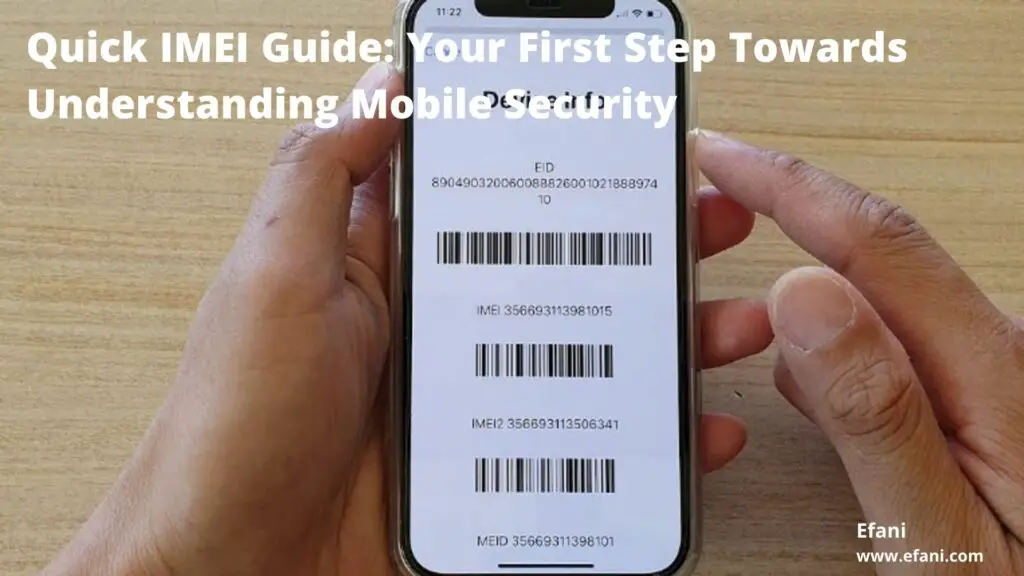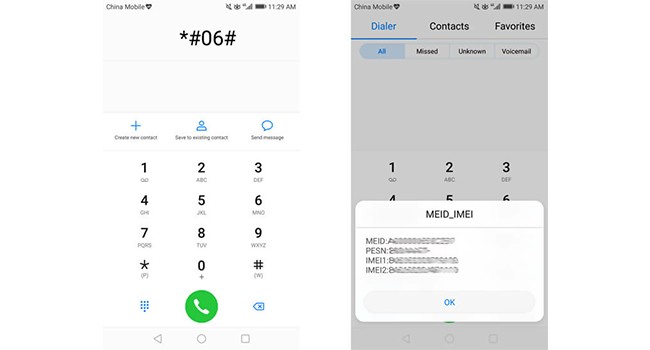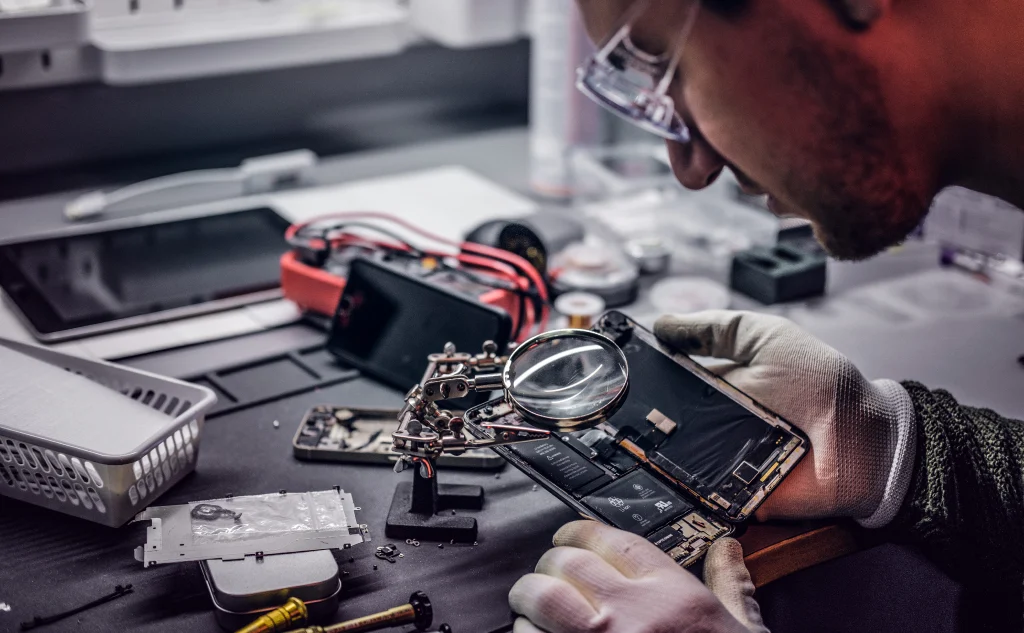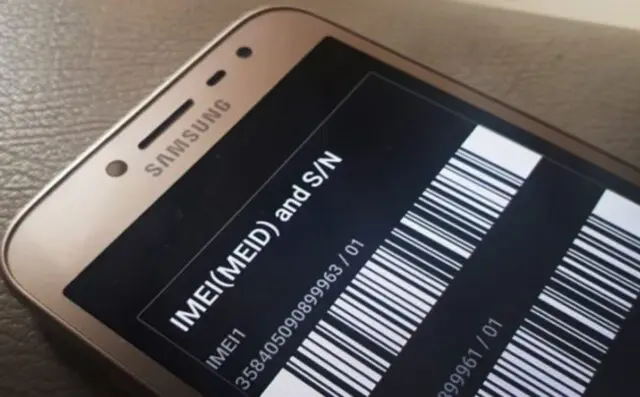IMEI vs. MEID: What is the difference & Why Should You Care?
People always seem to be confused about the IMEI and MEID numbers and for good reason. These codes are used in different ways so it’s important to know what your appliance’s IMEI is vs. your MEID. Let’s clear it once and for all.
IMEI vs. MEID: what is the difference?
IMEI stands for International Mobile Equipment Identity and is a 15-digit code uniquely assigned to every mobile device. This number identifies the phone to the carriers, so it can be tracked and blacklisted if stolen or lost. You can also use the IMEI to track down your phone if it’s lost or stolen, and can also verify its authenticity by doing a MEID lookup.
MEID stands for Mobile Equipment Identifier. It is a unique number assigned to a mobile device, such as a cell phone or tablet, to identify it on a wireless network. It is similar to an IMEI (International Mobile Equipment Identity), which is also a unique identifier for a mobile device.
While an IMEI is used internationally, a MEID is used in North America. The MEID is typically 14 digits long and is made up of a combination of numbers and letters.
MEID is usually found on the back of the device or under the battery, and can be used to activate the device on a wireless network or to track the device if it is lost or stolen.
This article details the difference between these two numbers and how they can be used in different situations. Keep reading to find out more.
For the latest tips and tricks and to fix any issue with your android phone, click here.
Purpose of the IMEI and MEID

Suppose you’ve lost your smartphone or it has been stolen and need to track its last known location. A phone’s location can be very easily tracked using its IMEI or MEID number using a tracker application. This can be very useful since even with a different SIM, the moment a call is made, it can be tracked down using the IMEI number. In addition, you can also ask your service provider to block the phone using that IMEI number which won’t allow the phone to connect to any wireless network. Rendering the phone is unusable and discourages theft.
Your mobile operator also uses the IMEI number to find out what phone you have, when you first activated that phone (you can check the activation date and time down to the second), and You can check if the phone number was going to be used. On a particular phone with his IMEI/MEID number on that phone. This is also a powerful tool as you can check the phone warranty and expiry date from the first use date of this phone.
If you contact the phone’s warranty department, they will need the IMEI/MEID/ESN or S/N number of this phone not only to verify the warranty date but also to verify that you are getting the correct phone. Manufacturers can also use the IMEI number to track a bad batch of phones to get them back or fix them. If a manufacturer notices some common problems on a specific cellphone, they can cross reference the IMEI numbers to see when and which cell phones were produced around the same time or in the same location. This can be very helpful in rooting our patterns to discern a bad batch of phones with similar issues.
Of course, this is all done behind the scenes, and users of these phones are assured nothing is wrong, but it’s a powerful tool for tracking things like this. If it is a physical issue such as hardware damage (volume buttons, etc.), the phone user is less likely to be held responsible for the physical damage when making a warranty claim. To a known issue with the phone.
Physical damage voids the phone’s warranty, so a known issue is the difference between having your phone provider or phone manufacturer repair or replace your phone for free or buying a different, more expensive phone, especially if you’re still under contract and don’t have an upgrade option yet.
There are also other uses for the IMEI and MEID numbers. Such as buying a used cell phone.
This is also a consideration when buying a used cell phone. If the description of the phone you sell says “Bad ESN,” “Bad IMEI,” or “Bad MEID,” the phone cannot connect to the wireless network and cannot make or receive calls. So, unless you’re buying a phone for a spare, think twice before buying.
Some third party applications claim to be able to locate your mobile phone if it is stolen. Using a specific device (often its device identifier) and the phone’s GPS capabilities. These applications must be installed on the phone before it is stolen and does not guarantee that the stolen phone can be identified or recovered.
I’ve listed it all in much more details below, so keep reading.
Ways to locate the IMEI/MEID number

There are several ways to find the IMEI or MEID number on a mobile device:
By Dialing Code
This method does not always work on all smartphones. Samsung devices, for example, require you to dial “*#1234#” instead. And even on devices that can display the IMEI number by dialing “*#06#”, you may have to dial it multiple times to get the number to appear.
Check in the device’s settings
On most devices, you can find the IMEI or MEID number in the “About” section of the device’s settings.
To access this, go to “Settings” > “About phone” or “About tablet.”
On the label
It’s kind of common knowledge that every phone has a unique MEID or IMEI number that’s imprinted in the hardware of the device. The reason this information is important is that it will help the police or whoever else to contact a phone service provider if your phone is ever stolen. In some cases, it’s not even possible to use the phone.
How can you provide this number if your phone won’t even power on for example? IMEI and MEID numbers are usually printed on a sticker and are attached to the phone. The exact location will depend on your device but it’s often located in the phone’s battery compartment or underneath its battery.
Comes as a Sticker
Some brands also provide the IMEI / MEID number on the back of the device in the form of a sticker when its shipped. This Sticker is often used for claiming your smartphone’s warranty as well.
What are the differences between an IMEI a MEID or ESN?

Finding the correct International Mobile Equipment Identity (IMEI), Mobile Equipment Identifier (MEID), or European Mobile Equipment Identity (ESN) for your device can be a pretty daunting task, especially if you’re new to electronic gadgets. Luckily, there are easy ways to figure out the MEID, IMEI, or ESN for your phone, or tablet. Just follow the methods shared above.
What is an IMEI Number?
The IMEI number is a unique 15-digit number that identifies your mobile phone. This number is unique for your device and is used to prevent mobile phones from being cloned.
Your device’s IMEI number is etched into the phone’s motherboard, making it invisible to the eye. The IMEI number is used by your mobile network provider to identify your device, so if you have the IMEI number of your device, you can easily check to see if your SIM is stolen.
What is a MEID Number on your phone?
A MEID number is a device identifier that allows your device to be different from all other phones worldwide. No two phones will ever have the same MEID code, and if you have a phone with dual SIM functionalities, you might notice that there are two available MEID codes each for a different number. MEID numbers are used to identify phones using CDMA technology. These phones do not have a SIM card; service providers like Verizon, Sprint, and US cellular all use CDMA technologies in cell phones.
Is IMEI The Same as MEID?
Although both of them are device identifiers, they are not the same. IMEI and MEID have some differences, as IMEI is a fifteen-digit number while MEID is a fourteen-digit number. Another differentiating factor is that IMEI numbers are used in phones using GSM, which stands for Global System for Mobile Communication. In contrast, MEID is used for phones running on CDMA, which stands for Code Division Multiple Access.
These two are different radio technologies used by phones to transmit and receive voice & data. GSM phones make use of a SIM card to link a cell phone to its network, while on the other hand, CDMA phones do not need a SIM as the phone itself is linked to the network. However, this has become a thing of the past since the advent of 4G LTE and 5G technology. The GSM vs. CDMA debate was only viable when 2G and 3G were still around. Nowadays, almost all the devices created are compatible with a multitude of radio technologies, including CDMA, GSM, and LTE.
What is an ESN Number on your phone?
ESN, or Electronic Serial Number, is used in the United States to identify a particular cell phone that requires a CDMA network for establishing wireless connections. ESNs are slowly becoming a thing of the past and are being replaced by MEIDs.
For what purpose are IMEI, MEID, and ESN numbers used?

IMEI, MEID, and ESN numbers are used to identify mobile devices on wireless networks. These numbers are unique to each device, and are used by wireless carriers to activate the device on their network and to track the device if it is lost or stolen.
IMEI, MEID, and ESN numbers use for Wireless carriers
IMEI, MEID, and ESN numbers are used by wireless carriers to activate and identify mobile devices on their network. When you purchase a new phone or tablet, the wireless carrier will use the device’s IMEI, MEID, or ESN number to register it on their network and assign it a phone number. This allows you to make and receive calls and texts, and use data on the device.
Wireless carriers use IMEI, MEID, and ESN numbers to track the devices that are connected to their network. This can be useful for a variety of purposes, such as detecting fraud, identifying the location of a device, or blocking a stolen device from being used on the network.
In addition to activating and tracking devices, wireless carriers may also use IMEI, MEID, and ESN numbers to ensure that only compatible devices are used on their network. For example, a device with a specific IMEI, MEID, or ESN number may only be able to connect to a certain wireless carrier’s network, or may only be compatible with certain types of data plans.
Manufactures use IMEI, MEID, and ESN numbers
manufacturers of mobile devices such as phones and tablets use IMEI, MEID, and ESN numbers to identify and track their products. These numbers are unique to each device and are typically assigned by the manufacturer at the time of production.
IMEI, MEID, and ESN numbers are used by manufacturers to identify specific devices and to track them through the production and distribution process. For example, a manufacturer may use the IMEI number to identify a specific phone that is being shipped to a retailer, or to track a device that has been returned for repair.
Other uses for IMEI and MEID numbers

Device recovery & Checking Warranty
If a device is lost or stolen, the owner can provide the device’s IMEI, MEID, or ESN number to the police or to the wireless carrier to help locate the device.
The IMEI and MEID numbers on your smartphone aren’t just for tracking lost or stolen phones. They’re also useful when you want to check a phone’s manufacturer and model number or verify whether a phone is still under warranty.
In addition to being used to activate and track mobile devices, IMEI, MEID, and ESN numbers can also be used to block a stolen device from being used on a wireless network. If a device is reported lost or stolen, the wireless carrier can block the device’s IMEI, MEID, or ESN number, preventing it from being used on their network.
Device blocking
If a device is reported lost or stolen, the wireless carrier can block the device’s IMEI, MEID, or ESN number, preventing it from being used on their network. This can help to prevent the device from being used by someone else.
Device tracking
Some apps and services allow users to track the location of their device using the device’s IMEI, MEID, or ESN number. This can be useful for parents who want to track their children’s location, or for people who have lost their device and want to try to locate it.
Device identification
IMEI, MEID, and ESN numbers can be used to uniquely identify a device, which can be useful in a variety of situations. For example, a customer service representative may ask for the device’s IMEI, MEID, or ESN number to verify the owner’s identity or to troubleshoot a problem with the device.
For tracking – lost or stolen cell phones

If you lose your cell phone or if it is stolen, you may be able to use the phone’s IMEI, MEID, or ESN number to help locate it. Here are a few steps you can take to try to track your lost or stolen phone:
- Contact your wireless carrier: Your wireless carrier may be able to track the location of your phone using the phone’s IMEI, MEID, or ESN number. You can contact your carrier’s customer service department to report the phone as lost or stolen and to request assistance in locating it.
- Use a tracking app: If you have a tracking app installed on your phone, such as “Find My iPhone” for iPhones or “Find My Device” for Android phones, you may be able to use the app to locate your phone. These apps use the phone’s GPS location to help you track it.
- Use a recovery website: There are websites that specialize in helping people locate lost or stolen phones. These sites allow you to enter your phone’s IMEI, MEID, or ESN number, and they will try to locate the phone for you.
- File a police report: If you believe your phone was stolen, it is a good idea to file a police report. You will need to provide the police with your phone’s IMEI, MEID, or ESN number, as well as any other relevant information, such as the make and model of the phone and when it was stolen.
It’s important to note that the chances of recovering a lost or stolen phone are not always high, but taking these steps can increase your chances of getting your phone back.
For Tracking – Repair, and replacements
IMEI, MEID, and ESN numbers can be used to track mobile devices for the purposes of repair and replacement as well. If a device is being repaired or replaced, the manufacturer or repair center may use the device’s IMEI, MEID, or ESN number to identify the device and to track its progress through the repair or replacement process.
For example, if you are sending your phone in for repair, the repair center may ask you to provide the phone’s IMEI, MEID, or ESN number to help them identify the device and to track its repair status. Similarly, if you are receiving a replacement device, the manufacturer or repair center may use the device’s IMEI, MEID, or ESN number to track the shipping and delivery of the replacement device.
Using IMEI, MEID, and ESN numbers to track devices for repair and replacement can help to ensure that the correct device is repaired or replaced, and that the repair or replacement process is completed efficiently and accurately.
For Insurance or warranty claims

IMEI, MEID, and ESN numbers can also be used when making insurance or warranty claims for mobile devices. If you are making a claim for a lost, stolen, or damaged device, you may be asked to provide the device’s IMEI, MEID, or ESN number to help verify your ownership of the device and to confirm that the device is covered under your insurance or warranty.
For example, if you are making a claim for a lost or stolen phone, the insurance company may ask you to provide the phone’s IMEI, MEID, or ESN number to help confirm that the phone was covered under your policy and to verify that the phone was indeed lost or stolen. Similarly, if you are making a claim for a damaged phone, the manufacturer or retailer may ask for the phone’s IMEI, MEID, or ESN number to confirm that the phone is covered under the warranty and to determine the cause of the damage.
Providing the IMEI, MEID, or ESN number of your device when making an insurance or warranty claim can help to ensure that your claim is processed efficiently and accurately.
Now you know
That’s it for this article, folks, now you know what the difference is between an IMEI and MEID number and how they can be very helpful in certain cases. To the average user, these numbers might not ever come into use unless and until you’re planning on selling your phone or buying a used phone. Despite that, thy are still very important and should be kept private.



